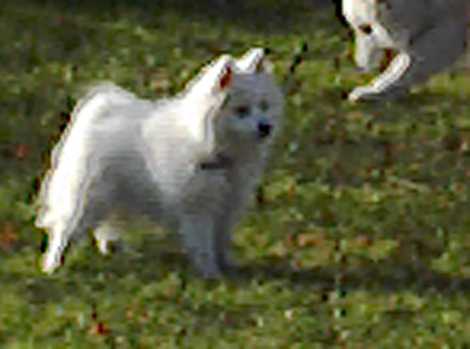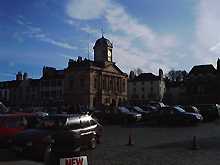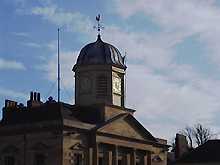UNDERSTANDING THE TEST ILLUSTRATIONS
PUZZLED as to why a claimed 'lossless' 640 x 480 pixel digital image should
look so unsharp, a simple still life test (lit by Systems Scandles fluorescent
studio lights) was set up. The ES-3000 was used at maximum telephoto setting
and closest focus, with a couple of tests for parallax, to shoot the Border
Fine Arts ceramic. The Leaf Lumina was set up with a 100mm Russian tele
lens, to shoot a similar composition from the same distance, set to create
a 640 x 480 pixel file.
There was a substantial difference in visible detail, the Lumina's pixels
all apparently 'counting' towards forming an image. The ES-3000 seemed to
make very inefficient use of the available file size, and showed every sign
of a strongly compressed and artifically sharpened image resembling a video
freeze frame, even in SuperFine mode. There was no great loss of quality
when using the Fine mode with compression, but the Normal mode (hundreds
of pictures per card) yielded a file about the same size as the Casio QV-10
tested two months ago.

An enlarged small section of an ES-3000 file (4x blow-up) shows how the
image is sharpened and affected by compression.
To store 21 images on a 4Mb PCMCIA card, the Chinon must compress the picture
to 195Kb. Our next test was to save the visually perfect Lumina image using
JPEG settings of Maximum, High,
Medium, and Low quality
through Photoshop. The Maximum quality file p; truly lossless in practice
p; was only 103Kb and the very acceptable High quality file was just
64Kb (beyond this, savings were minimal).
We are left with one question: why do all digital cameras produce such
poor files, when JPEG compression is so much better, and JPEG files are
a PC/Mac/other interchange standard?
Other tests


The zoom lens did prove highly resistent to into-the-light flare, but backlight
caused slight underexposure, and unlike the Casio, the Chinon does not have
a plus/minus exposure over-ride. This shot shows the two extremes of the
zoom lens range.


